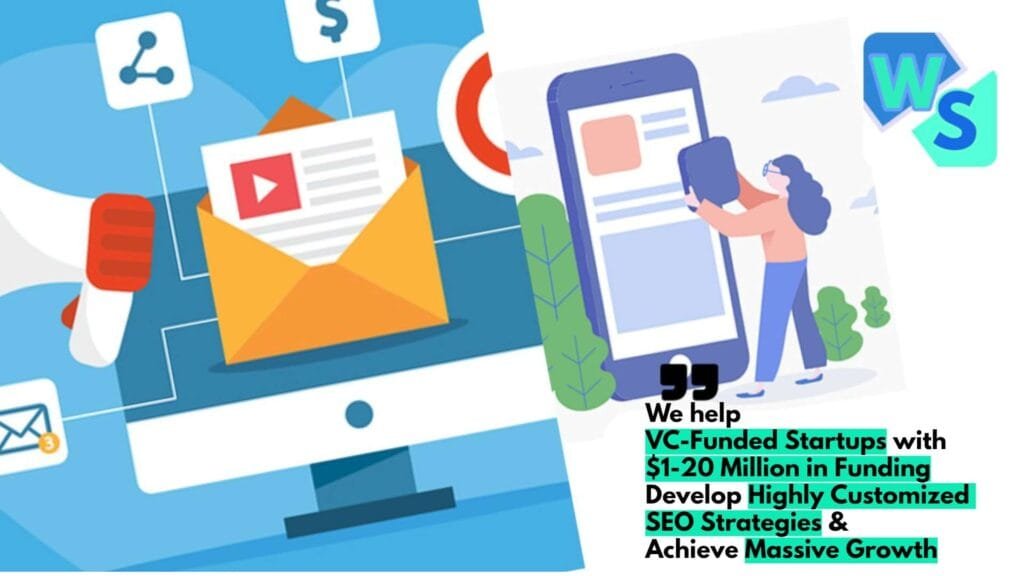Current Digital Marketing Landscape
As a business owner or marketing executive, it’s essential to stay informed about the ever-evolving digital marketing landscape. Significant changes and innovations shape marketing strategies and impact how you engage with your customers. Here are two critical aspects currently transforming the field.
Impact of Artificial Intelligence
The rise of artificial intelligence (AI) is significantly changing the landscape of digital marketing. Not only does AI enhance operational efficiency, but it also improves consumer experiences. Businesses leveraging AI report increased productivity, with more than 54% seeing a boost in their output. Additionally, about 95% of marketing leaders claim that AI positively influences their operations (Practina).
AI enables personalized customer interactions and automated ad placements. This means that you can tailor your marketing messages to individual preferences, resulting in better engagement. AI also enhances data analytics capabilities, allowing businesses to analyze extensive datasets accurately. This analysis provides invaluable insights into customer behavior and trends, aiding in informed decision-making.
| AI Impact on Business | Percentage of Leaders |
|---|---|
| Experienced increased productivity | 54% |
| Positive impact on businesses | 95% |
For further insights on AI’s role in your marketing efforts, explore our latest marketing trends.
Marketing Strategy Essentials
Understanding the essentials of a successful marketing strategy is crucial for staying competitive. In 2024, research indicates that 53% of business leaders plan to increase their digital marketing investments (LinkedIn). This indicates a strong commitment to adapting and thriving in the current digital era.
An effective marketing strategy emphasizes building long-term relationships with customers, rather than focusing solely on one-time sales. This approach aligns with inbound marketing, which involves attracting, nurturing, and delighting your customer base over time (Adobe). By incorporating inbound marketing principles into your strategy, you can create a loyal customer base that actively engages with your brand.
For a comprehensive overview of contemporary practices, consider reviewing the current marketing trends relevant to your industry. Understanding these factors will better position you to harness the potential of digital marketing trends while effectively reaching your audience.
Key Digital Marketing Strategies
As you navigate the ever-evolving landscape of digital marketing, employing effective strategies is crucial to your success. Here are four fundamental strategies that can help you capitalize on the latest digital marketing trends.
Content Marketing
Content marketing is centered around creating valuable, relevant, and consistent content to attract and engage your target audience. Blogging has emerged as one of the most popular forms of content marketing. Through well-crafted blog posts, you can establish your brand authority, increase audience engagement, and drive traffic to your website. Consistency and quality are key. Refer to our article on content marketing trends for more insights.
| Content Type | Benefits |
|---|---|
| Blogs | Increases organic reach and establishes authority |
| Videos | Enhances engagement and caters to visual learners |
| Infographics | Simplifies complex data and increases shareability |
| E-books | Provides in-depth information and captures leads |
Paid Advertising
Paid advertising, such as Google Ads or social media ads, is essential for increasing brand awareness and reaching audiences that may not discover your business organically. This strategy allows you to target specific demographics and drive website traffic effectively. A well-planned paid advertising campaign can yield immediate results and complements your organic marketing efforts. Check out our section on social media advertising trends for the latest insights.
| Ad Platform | Typical Uses |
|---|---|
| Google Ads | Keyword-targeted ads to increase search visibility |
| Facebook Ads | Highly targeted demographic and interest-based ads |
| LinkedIn Ads | B2B marketing and professional audience engagement |
| Instagram Ads | Visual-focused ads targeting younger demographics |
Search Engine Optimization (SEO)
Search Engine Optimization (SEO) focuses on improving your website’s visibility and ranking on search engine results pages (SERPs). The primary goal is to increase organic traffic to your site from search engines like Google and Bing. Effective SEO strategies include keyword optimization, on-page optimization, and link-building. A well-executed SEO plan can lead to sustainable traffic growth. Explore our article about search engine marketing trends for in-depth tactics and strategies.
| SEO Component | Purpose |
|---|---|
| Keyword Research | Identifies high-traffic search terms |
| On-Page Optimization | Enhances the content and structure of web pages |
| Backlink Building | Increases authority and trustworthiness of your site |
Social Media Marketing
Utilizing platforms like Facebook, Twitter, LinkedIn, and Instagram is essential for effective social media marketing. This strategy allows you to engage with customers, drive traffic, and enhance brand awareness. Consistent advertising spend and specific landing pages are necessary for optimal results. Understanding the latest trends in social media marketing trends can guide your strategy.
| Platform | Key Strengths |
|---|---|
| Vast user base and advanced targeting options | |
| Timely engagement and trending topics | |
| B2B networking and professional growth | |
| Visual marketing and high engagement rates |
Implementing these four key strategies—content marketing, paid advertising, SEO, and social media marketing—will position your business for success in the competitive digital landscape. By staying informed of evolving marketing trends, you can adapt and thrive in your industry.
Understanding Consumer Behavior
Understanding consumer behavior is essential for implementing effective digital marketing strategies. By analyzing trends and preferences, you can tailor your marketing efforts to meet the evolving needs of your target audience.
Online Consumer Buying Trends
In recent years, online consumer buying behaviors have shifted significantly. Factors such as convenience, fast shipping, and product availability are top priorities for consumers. This shift highlights the importance of having an optimized online presence.
| Buying Trend | Percentage of Consumers Reporting It |
|---|---|
| Prioritize fast shipping | 75% |
| Value product reviews | 65% |
| Prefer online shopping | 82% |
| Demand for personalized offers | 70% |
Data reflects trends in the online shopping behavior of consumers.
Personalization through Consumer Insights
Personalization is central to enhancing customer experience and building brand loyalty. By leveraging consumer behavior insights, businesses can create tailored experiences across various digital touchpoints. This extends from website designs to content marketing (Scoop.it). Customization drives engagement and encourages repeat business.
Targeted Marketing Strategies
Segmenting customers based on their online behavior enables more targeted marketing efforts. For instance, brands focusing on Gen Z should concentrate on social media marketing on platforms like TikTok and Instagram (Scoop.it). By analyzing user behavior at various stages of the customer journey, you can ensure that the right message reaches consumers at the right time, maximizing the efficacy of your campaigns.
Implementing effective strategies that prompt satisfied customers to share reviews and testimonials is equally important. Positive feedback not only enhances credibility but also influences potential purchase decisions (Scoop.it). In today’s digital landscape, understanding and adapting to consumer preferences is more critical than ever for achieving success in your marketing initiatives.
For more insights into how to leverage these strategies, explore our articles on latest marketing trends and consumer behavior trends.
Emerging Marketing Trends
Staying ahead in the competitive landscape requires understanding and adapting to the latest digital marketing trends. Here are some key trends that are shaping the future of marketing.
Rise of Video Marketing
Video marketing continues to see a significant surge in popularity, driven by platforms like TikTok, which are constantly innovating with new features. TikTok is now testing longer video formats such as 30-minute uploads, thus allowing businesses to create more expansive and engaging content. Additionally, users are spending over half of their time on TikTok watching videos that last a minute or longer, making it crucial for brands to leverage this medium to capture consumer attention (Sprout Social).
| Platform | Average Watch Time | Popular Video Formats |
|---|---|---|
| TikTok | 50% of total viewing time | 1-minute, 30-minute uploads |
| Instagram Reels | High engagement | Short, engaging clips |
| YouTube | Variable | Educational and entertainment |
For guidance on utilizing video effectively, explore our video marketing trends.
Playful Content Strategies
Emerging as a prominent trend, playful content is redefining brand narratives on social media. Brands are shifting from a serious tone to more light-hearted, meme-inspired content that resonates with diverse audiences. Companies like Auntie Anne’s and platforms such as LinkedIn are showcasing this trend by integrating humor and relatability into their marketing strategies (Sprout Social).
The playful aspect not only increases engagement but helps brands appear more approachable. Businesses looking to adapt this strategy should focus on creating content that reflects personality while remaining aligned with brand values.
Social Commerce Evolution
The rise of social commerce is becoming increasingly significant, as platforms like TikTok introduce features such as TikTok Shop to enhance in-app shopping experiences. This trend includes live streaming and interactive shopping events, which allow brands to engage directly with consumers in entertaining ways (Sprout Social).
| Social Platform | Shopping Feature | Engagement Type |
|---|---|---|
| TikTok | TikTok Shop | Live streaming and direct purchases |
| Shoppable posts | Browsing through tagged products | |
| Shop tab | In-app shopping experience |
Understanding how to utilize these features can enhance your consumer reach. For more insights on this topic, review our article on current marketing trends.
Optimizing Social Media Content
To improve discoverability, brands should optimize their social media content similarly to how they would optimize traditional web content for search engines. Studies reveal that approximately 40% of Gen Z individuals prefer using TikTok over traditional search engines like Google for information searches.
Optimizing social media content involves incorporating relevant keywords, utilizing hashtags effectively, and encouraging engagement through calls-to-action. This will help your brand become more visible on these rapidly growing platforms.
| Optimization Technique | Purpose | Expected Outcome |
|---|---|---|
| Keyword Integration | Improve discoverability | Higher engagement |
| Hashtags | Reach wider audiences | Increased visibility |
| CTAs | Enhance interaction | More follower growth |
For more strategies on crafting performant content, you can explore our insights on content marketing trends.
By acknowledging these emerging marketing trends, you can take strategic steps to enhance your marketing efforts, effectively reaching and engaging your target audience.
The Role of AI in Marketing
Artificial Intelligence (AI) is revolutionizing the marketing landscape and providing businesses with powerful tools to enhance their strategies. Understanding the role of AI can help you stay ahead in the ever-evolving environment.
Data Analysis and Insights
AI-driven analytics tools can process and analyze large volumes of data in real-time. This capability empowers you to gain actionable insights that inform marketing strategies. You can identify the most effective marketing channels and predict future trends, helping your business stay ahead of the curve (Forbes).
| Insights Provided by AI | Benefits |
|---|---|
| Real-time data analysis | Allows for immediate adjustments to marketing campaigns |
| Trend prediction | Helps in planning future marketing strategies |
| Channel effectiveness | Identifies the best channels for targeting customers |
Personalized Recommendations
AI-powered personalized recommendations heavily influence customer behavior. By analyzing user data, AI can suggest products or services tailored to individual preferences. This approach not only improves user experience but also drives decision-making and enhances sales and satisfaction levels (Practina).
| Feature | Description |
|---|---|
| User data analysis | Utilizes past behavior for tailored suggestions |
| Enhanced engagement | Increases interaction through relevant recommendations |
| Conversion boost | Drives higher sales through personalized offers |
Chatbots and Virtual Assistants
AI-powered chatbots are increasingly popular for efficient customer support. They offer immediate assistance 24/7, freeing up human agents for more complex queries. The implementation of chatbots improves overall efficiency and customer satisfaction.
| Benefits of Chatbots | Impact |
|---|---|
| 24/7 availability | Enhances customer service by being accessible anytime |
| Fast response times | Reduces wait times for customers |
| Resource optimization | Allows human agents to focus on complex tasks |
AR and VR Integration
The integration of Augmented Reality (AR) and Virtual Reality (VR) into marketing strategies is transforming how consumers interact with products. These technologies allow customers to visualize products in real-world settings, creating immersive experiences that can lead to increased engagement and sales.
| AR/VR Applications | Benefits |
|---|---|
| Product visualization | Customers can see how products fit into their lives |
| Interactive experiences | Engages users in a memorable way |
| Enhanced decision-making | Provides confidence in purchasing decisions |
AI’s role in marketing is crucial for navigating the latest digital marketing trends and adapting to the needs of your audience. Leveraging AI tools effectively can set your business apart in a competitive market.
Expanding Marketing Investments
To effectively capitalize on the latest digital marketing trends, it’s essential to explore different strategies and tools that enhance your marketing efforts. Here are key areas to focus on when expanding your marketing investments.
Utilizing First-Party Data
As Google prepares to phase out third-party cookies in 2024, leveraging first-party data has never been more crucial. This data, collected directly from your customers, provides valuable insights into customer interactions and behaviors. It enables you to create more focused campaigns tailored to your audience’s preferences and needs. Here’s a summary of the advantages of utilizing first-party data:
| Benefits of First-Party Data | Details |
|---|---|
| Enhanced Targeting | Allows for more accurate ad targeting strategies. |
| Improved Customer Insights | Offers deeper understanding of customer behaviors. |
| Increased Privacy Compliance | Aligns with current privacy regulations. |
By prioritizing first-party data, you can develop more effective marketing campaigns that resonate with your audience. Explore more about current and emerging marketing trends to stay ahead.
Middle-of-Funnel Content
Middle-of-funnel (MOF) content plays a pivotal role in nurturing leads and guiding them toward conversion. This type of content bridges the gap between initial awareness and final purchasing decisions. As you expand your marketing investments, consider the following MOF content types:
| MOF Content Type | Purpose |
|---|---|
| Case Studies | Illustrate successful outcomes of your product or service. |
| Webinars | Provide valuable insights, showcasing your expertise. |
| E-books and Guides | Offer in-depth information relevant to your audience’s needs. |
Investing in MOF content not only aids in lead conversion but also builds trust and authority in your industry. For additional insights, check out our section on content marketing trends.
Content Creators vs. Influencers
In recent years, content creators and influencers have become crucial in marketing strategies. While both play important roles, understanding the differences can help you allocate resources effectively. Here’s a comparative analysis:
| Aspect | Content Creators | Influencers |
|---|---|---|
| Audience Reach | Typically have smaller, niche audiences. | Often have larger, broader audiences. |
| Engagement | Higher engagement with dedicated followers. | Typically lower engagement, but more trust. |
| Content Type | Focus on original, diverse content styles. | Often product-focused content. |
Investing in both content creators and influencers can maximize your reach and impact. Learn more about influencer marketing trends to guide your decisions.
AI in Digital Advertising
AI technologies are reshaping the digital advertising landscape. By integrating AI, businesses can enhance their marketing effectiveness through personalized experiences and data-driven strategies. Here are some ways AI is influencing digital advertising:
| AI Applications | Benefits |
|---|---|
| Personalized Ads | Tailors advertisements to individual preferences and behaviors. |
| Automated Campaign Management | Optimizes ad spends and performance in real-time. |
| Predictive Analytics | Anticipates consumer behavior and trends, allowing proactive adjustments. |
Implementing AI in your marketing strategy can significantly improve campaign efficiency and customer engagement. For insights on the latest programmatic advertising trends, consider expanding your knowledge in AI applications.
By strategically expanding your marketing investments in these areas, you can better connect with your audience and drive positive outcomes in your business.
Consumer Behavior Impact
Influencer Marketing Effectiveness
Influencer marketing has established itself as a powerful tool within the landscape of digital marketing trends. Your customers increasingly trust the recommendations of influencers over traditional advertisements. In fact, the return on investment (ROI) from influencer marketing can be up to 11 times higher compared to conventional methods (Sun Media Marketing). This trend highlights the importance of integrating influencers into your marketing strategy, particularly if you aim to engage a strategic audience effectively.
| Key Statistics | Influencer Marketing |
|---|---|
| Consumer Trust | 70% trust influencers more than traditional ads |
| ROI Ratio | Up to 11x higher than traditional marketing |
User-Generated Content Influence
Another significant trend is the rise of user-generated content (UGC). This is content made by customers—such as reviews, testimonials, or social media posts—that enhances your brand’s credibility. When you showcase positive UGC, it can greatly improve brand perception, authenticity, and trust, leading to higher engagement rates. Consumers are more inclined to interact with brands that exhibit genuine content created by real users (Sun Media Marketing).
| UGC Impact | Description |
|---|---|
| Brand Reputation | Increases due to authenticity |
| Customer Engagement | Higher interaction rates |
E-Commerce Shift Post-Covid
The Covid-19 pandemic has accelerated the transition to digital platforms. As consumers shifted to online shopping, businesses adapted by investing in e-commerce and utilizing various digital marketing channels including PPC and SEO. This shift has shown a significant increase in online sales, and businesses must continue to focus on these trends to reach their target audience effectively (Sun Media Marketing).
| E-Commerce Trends | Changes Noted |
|---|---|
| Online Sales Growth | Significant increase during and post-Covid |
| Digital Marketing Investments | Greater focus on PPC, SEO |
Expectations for Personalized Experiences
As consumers become accustomed to more tailored interactions, personalization is now a critical aspect of the marketing landscape. You should expect your audience to seek personalized experiences that cater to their preferences and behaviors. This trend shows no signs of slowing down, making it imperative for businesses to utilize data analytics and customer insights to craft unique marketing messages and offers that resonate.
| Personalization Trends | Consumer Expectations |
|---|---|
| Tailored Content | 80% of consumers prefer personalized experiences |
| Data Utilization | Essential for effective marketing strategies |
By keeping a close eye on these impacts of consumer behavior, you can refine your strategies and align them with current marketing trends to maximize engagement and conversion rates.
Inbound Marketing Approach
Adopting an inbound marketing approach is vital in today’s digital landscape. This strategy focuses on attracting, engaging, and delighting customers rather than pushing them towards a sale. Here are the essential components of this approach.
Building Customer Relationships
Building long-term relationships with your customers is at the core of inbound marketing. By nurturing these connections, you can create a loyal customer base that advocates for your brand. This involves listening to customer feedback, providing value, and maintaining open channels of communication. Customers are more likely to return to brands that they feel a personal connection with.
Invest in customer relationship management (CRM) systems to track interactions, gather data, and personalize communications. Tailoring your messaging helps foster trust and encourages repeat business.
Content Marketing Strategies
Content marketing is essential for answering your audience’s questions and guiding them through their buyer’s journey. Focus on creating valuable content like blog posts, videos, white papers, and infographics that cater to various user personas and their needs (Adobe: Exploring Short Videos Showcasing Marketo’s Powerful Features).
| Content Type | Purpose |
|---|---|
| Blog Posts | Answer questions, provide insights |
| Videos | Showcase products, explain concepts |
| Podcasts | Engage audience through discussions |
| Infographics | Simplify complex information visually |
| eBooks | Deep dives into topics for lead generation |
Identify trending topics within your industry by using tools that analyze search queries and social media discussions. This will ensure that your content remains relevant and valuable.
SEO Techniques
Search Engine Optimization (SEO) is crucial for enhancing your online visibility. Implementing effective SEO strategies will help improve your rankings in search engines, driving organic traffic to your website. This includes optimizing website content, using relevant keywords, and ensuring a user-friendly experience.
Key SEO strategies include:
| Technique | Description |
|---|---|
| Keyword Research | Identifying phrases potential customers are searching for |
| On-Page SEO | Optimizing title tags, meta descriptions, and headings |
| Off-Page SEO | Building backlinks from reputable sites |
| Technical SEO | Ensuring website speed, mobile-friendliness, and crawling |
Regularly monitor your site’s performance and adjust your strategies accordingly to maintain and improve your rankings.
Social Media Engagement
Utilizing social media platforms is essential for engaging with customers and driving brand awareness. Platforms like Facebook, Twitter, LinkedIn, and Instagram provide a space for meaningful interactions; leveraging these opportunities can increase your reach (Adobe: Exploring Short Videos Showcasing Marketo’s Powerful Features).
Consider these strategies for effective social media engagement:
| Strategy | Purpose |
|---|---|
| Consistent Posting | Keeps your brand front of mind |
| User Engagement | Responding to comments and messages |
| Running Contests | Encourages user participation |
| Sharing User-Generated Content | Builds brand community and trust |
Creating engaging social media content requires a mix of promotional, educational, and entertaining posts. Tailor your approach for each platform to maximize impact.
For more insights into marketing strategies, explore our articles on latest marketing trends and current marketing trends.




















